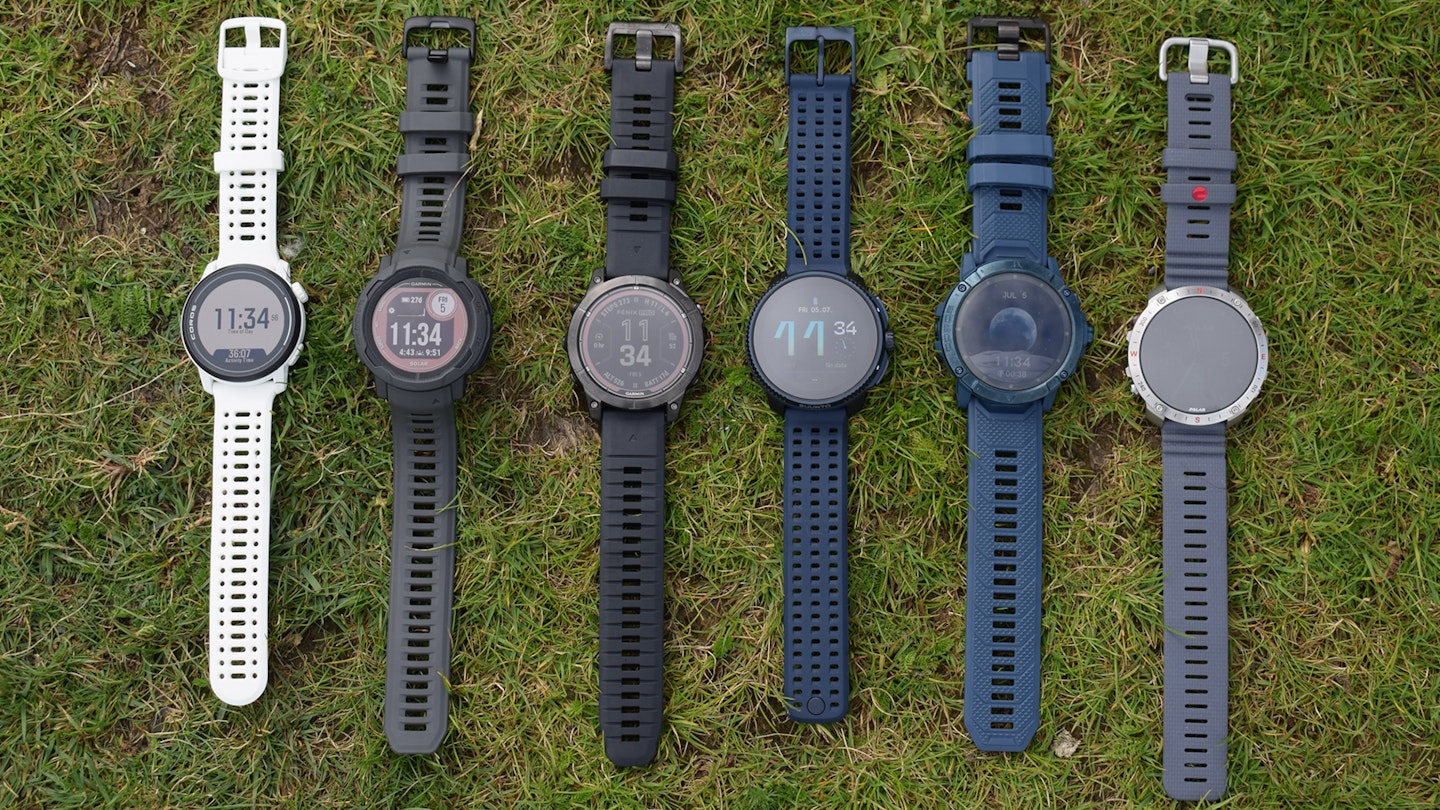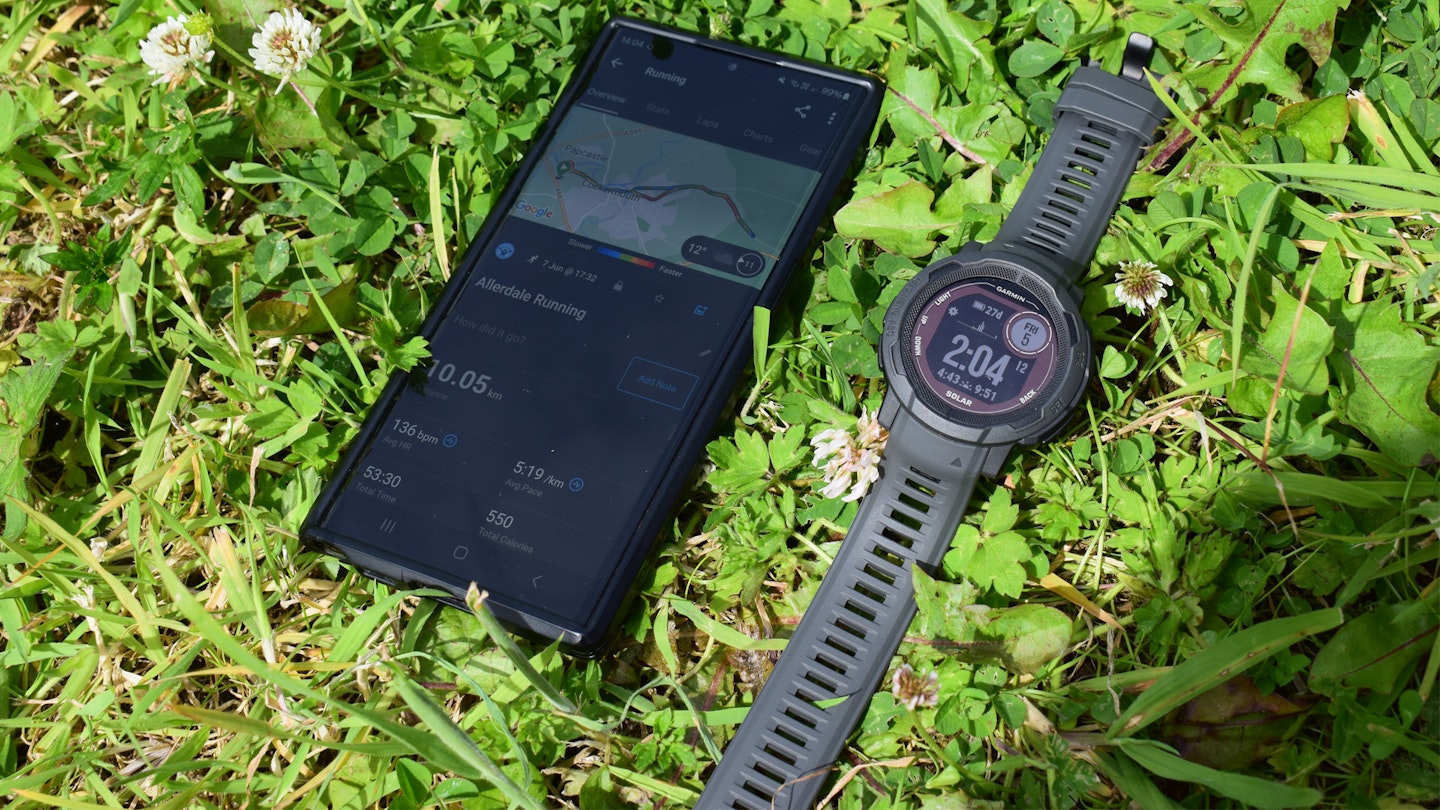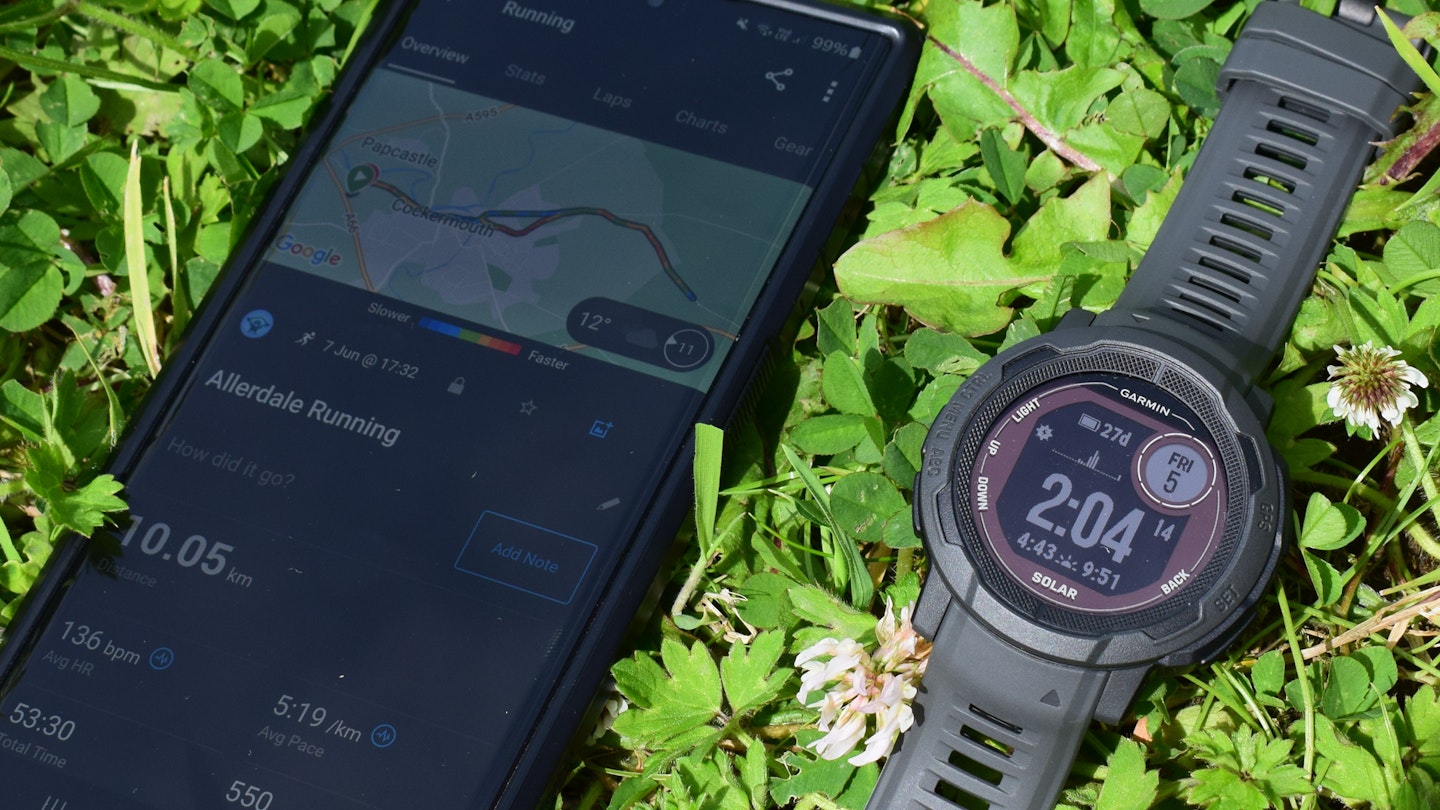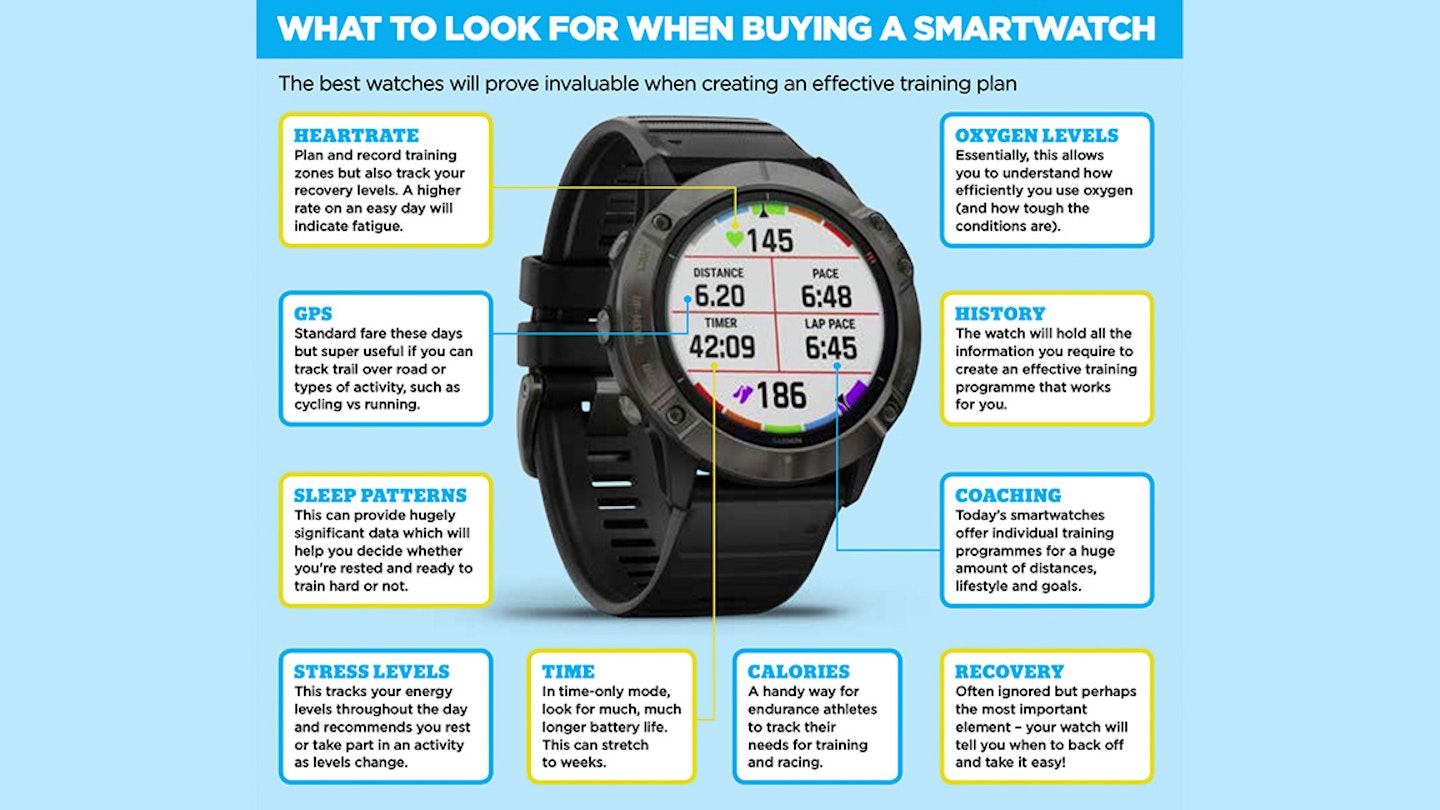Deciding which style of GPS running watch is right for you can be a chore. At the top end, you'll find titanium-cased sapphire-screened indestructa-watches that can pay for your coffee and make excuses for your slower pace on Strava in one motion. These can go for almost a grand. There are many other (maybe better) options to consider.
Brands and price

Our recommendation is simple: pick a watch from one of four reputable brands – Garmin, Coros, Suunto or Polar. These four brands are well-known and well-respected, and should prove a safe bet with good customer service, warranties and all-round performance.
As the market leader, Garmin has the biggest range by some margin, with a huge selection of watches to meet all needs and budgets. But all three other brands have a decent variety too.
If we were forced to rank them, Garmin is the clear standout candidate. Runner-up would have to be Coros or Suunto (we can’t decide, there’s little between them) and Polar is perhaps a step below, but arguably on the rise.
Or, to put it another way, they are all top-notch options, with only small differences and quirks from brand to brand.
We’d strongly suggest avoiding cheaper, lesser-known smartwatch brands, such as Amazfit, as performance is unlikely to match that of pricier watches.
You get what you pay for, after all. Smartwatches from phone brands such as Apple, Samsung, Huawei, Honor and others are, of course, impressive in their own way, but we’d argue they are far more “lifestyle-y” rather than running focused, so again we’d encourage you to steer clear. Fitness trackers are rather cheap and nasty, so avoid them too.
Prices for a good smartwatch vary from about £200 to a whopping £750. If you’re on a tight budget, the best bets from our round-up are the Coros Pace 3 (£219) or Garmin Instinct 2 Solar (£299), which are both brilliant entry-level option for beginners. But, if you can, we’d suggest stretching to £400+ for enhanced performance with one of our top picks from our best GPS running watch roundup.
Is a running watch worth buying?

Accurate tracking of distance, pace and elevation
One of the most significant benefits of a GPS running watch is its ability to accurately track your distance, pace, and elevation gain/loss. On the trails, these metrics can be quite different from road running due to the varied terrain.
With a GPS watch, you'll have precise data that reflects your effort, whether you're tackling a steep ascent, navigating technical descents, or cruising along a flat section. This information is invaluable for pacing yourself during longer runs and for measuring your progress over time.
Navigation and route planning

Trail running often takes you off the beaten path, where traditional landmarks and road signs are non-existent.
A GPS running watch with navigation features can help you stay on course and avoid getting lost. Many modern watches offer route planning, breadcrumb trails, and turn-by-turn directions.
This is particularly useful when exploring new trails or running in remote areas where cell service is unreliable. You can pre-load routes before your run or follow trails shared by others, ensuring you enjoy the adventure without the stress of losing your way.
Monitoring your performance and health metrics
Beyond tracking your location and distance, a GPS running watch can also monitor key performance and health metrics like heart rate, VO2 max, and calories burned.
For newcomers, understanding these metrics can help you tailor your training to improve endurance, manage your exertion levels, and avoid overtraining. For example, tracking your heart rate can help you maintain a steady pace during a long climb or push harder during interval training.
Many watches also include features like sleep tracking and recovery time suggestions, which can be beneficial for optimising your overall fitness.
Training insights and personalised workouts

Many GPS running watches come equipped with advanced training features that offer insights and guidance tailored to your fitness level.
These watches can create personalized workout plans, suggest recovery times, and even adapt your training schedule based on your performance.
This is particularly helpful for those who are new to structured training or are preparing for their first trail race.
With a GPS watch, you essentially have a virtual coach on your wrist, guiding you through each run and helping you achieve your goals.
Safety features

Safety is a paramount concern when venturing into the wilderness. GPS running watches often come with safety features such as live tracking, which allows a trusted person to follow your run in real-time, and incident detection, which can alert emergency contacts if the watch senses a fall or sudden stop.
These features provide peace of mind, especially when running in isolated areas or challenging conditions.
Motivation and goal setting

For many runners, tracking progress is a key motivator. A GPS running watch allows you to set and track specific goals—whether it's running a certain number of miles per week, hitting a new personal best on your favorite trail, or maintaining a consistent pace over a tough course.
The ability to see your progress in real-time, and review it afterward, can be incredibly motivating and help you stay committed to your training.
Connectivity and community engagement

Many GPS running watches can sync with your smartphone and popular fitness apps like Strava, Garmin Connect, or Nike Run Club. This connectivity allows you to share your runs, compare your performance with others, and join virtual challenges. Engaging with the trail running community online can be a great way to stay motivated, discover new trails, and connect with like-minded runners.
If you’re convinced that a GPS running watch is worth the investment, the next step is choosing the right one. Consider what features are most important to you—whether it's battery life for ultra-long adventures, detailed mapping capabilities, or comprehensive health metrics.
If you're a beginner, you might not need the most advanced (and expensive) model. Instead, look for a watch that offers a good balance of essential features, ease of use, and value for money.
Anatomy of a GPS running watch

Key features:
Heart rate tracking: The main features to look for are a heart-rate monitor (HRM). This will help you to train smarter, ensuring your runs are neither too hard nor too easy.
GPS: The cornerstone of a running watch, GPS will let you keep an accurate log of your mileage; particularly useful if you are training for a longer event.
Battery life: Certain watches allow you to alter the rate at which they gather GPS data and so eke out battery life. This is a great feature for ultra runners. Many only last a few hours between charges – no good if you’re doing the UTMB. Pick one that will keep going as long as you need.
Navigation features: Mountain runners and explorers might want a watch that gives accurate grid references, a compass and altitude above sea level, but these may be surplus to your needs.
GPX enabled: Want to follow a route? Check if the watch lets you upload GPX files to follow a trail on screen. It won’t show a detailed map but will keep you on co
Alerts: Check if you can set alerts (audible or vibrate) that tell you when you fall outside a heartrate zone or let you know your split times. This can be really useful for race pacing. Some watches will also offer automated safety alerts to chosen contacts if you seem to have a fall or accident when out running.
Display: Choose a watch that displays the information you want to know on the run, and make sure it’s large and clear enough for easy viewing. Most watches will have the option to customise your data screen, so you’re viewing the metrics you care about as you run.
